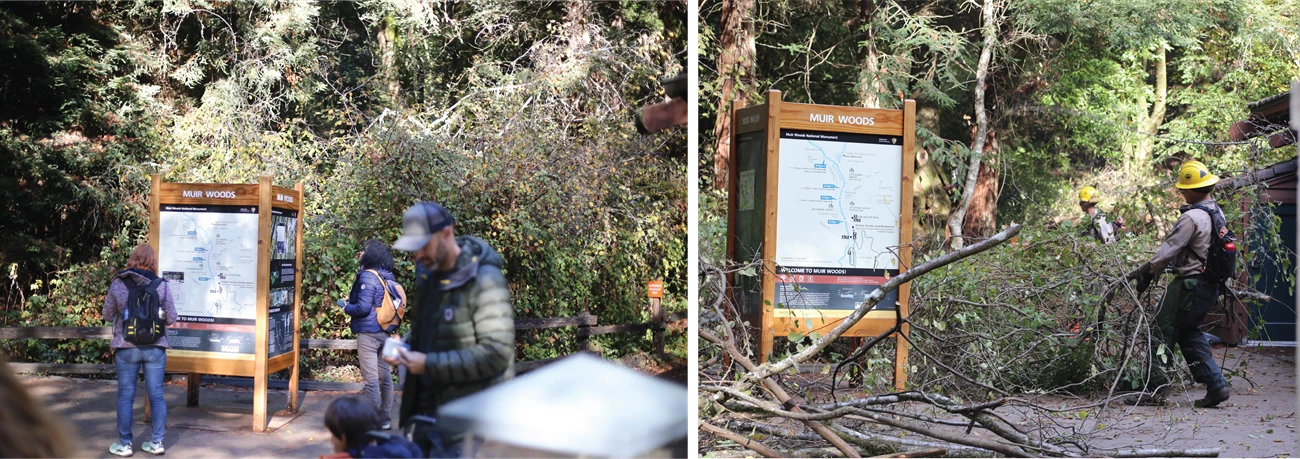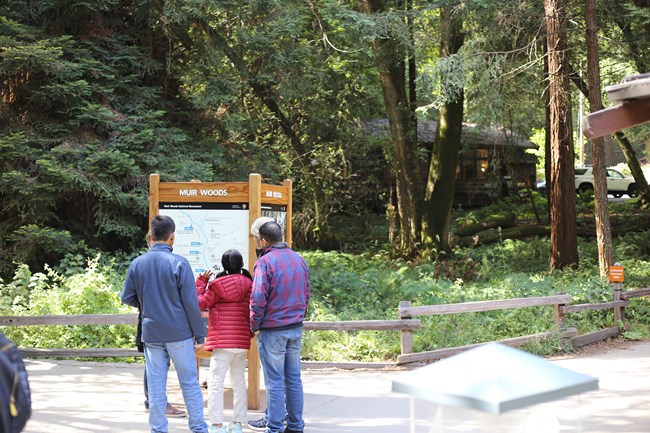Last updated: July 8, 2025
Article
Defending Muir Woods with defensible space

NPS / JRitchey
Muir Woods National Monument, the only old growth redwood forest within 15 miles of San Francisco, is open every day of the year and welcomes nearly a million annual visitors. In late 2024, park leadership and staff closed the park proactively for two days to reduce the potential for wildfire and protect facilities and critical infrastructure. Led by National Park Service Wildland Fire Management, in coordination with Marin County Fire Department, workers removed overgrown vegetation near key infrastructure to create defensible space.
Defensible space is a cleared physical buffer between infrastructure and the rest of the forest. For Muir Woods, maintaining this buffer is a key step in preparing for wildfire. Removing hazardous plants near buildings – including the visitor center, restrooms, café, and staff offices – reduces the fuel load, or flammable materials, and gives firefighters critical time to prevent wildfires from damaging or destroying these important facilities and historical structures.
Defensible space keeps important places like Muir Woods safer and provides a working example of how park neighbors can do the same. Thanks to the park’s visibility, the recent defensible space work also presented staff with an opportunity to educate the local community about this proactive work. With a year-round fire season, Californians follow best practices to protect their homes and structures, especially for those living in the wildland-urban interface (WUI), the transition zone from more developed areas to more natural zones. The efforts at Muir Woods demonstrate the physical changes locals can make in their own environment to be more resilient in the face of climate-related threats.
Defensible space is a cleared physical buffer between infrastructure and the rest of the forest. For Muir Woods, maintaining this buffer is a key step in preparing for wildfire. Removing hazardous plants near buildings – including the visitor center, restrooms, café, and staff offices – reduces the fuel load, or flammable materials, and gives firefighters critical time to prevent wildfires from damaging or destroying these important facilities and historical structures.
Defensible space keeps important places like Muir Woods safer and provides a working example of how park neighbors can do the same. Thanks to the park’s visibility, the recent defensible space work also presented staff with an opportunity to educate the local community about this proactive work. With a year-round fire season, Californians follow best practices to protect their homes and structures, especially for those living in the wildland-urban interface (WUI), the transition zone from more developed areas to more natural zones. The efforts at Muir Woods demonstrate the physical changes locals can make in their own environment to be more resilient in the face of climate-related threats.

NPS/J RITCHEY
